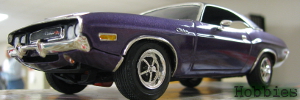















Die Cast Truck History |
|---|

|
Edward Fisher
24 March 2008
The History of Die-Cast Trucks
Die-cast truck models have existed nearly as long as the trucks they were modeled after. Improvements in industrial die-casting and metallurgy have benefited the die-cast toy vehicle industry since its beginnings in the early 20th century. The purpose and marketing of the toys themselves has changed as well. However, the collection of these die-cast vehicle replicas remains a widespread hobby with ever growing appeal.
Early Die-Cast Trucks
The earliest die-cast toys were marketed in the early 20th century. The first model designs were simple and crude, consisting of metal car or truck bodies with no interior structures or windshields. Vehicle models were cast from a zinc-aluminum alloy called Zamak. The Zamak alloy often contained impurities, and was prone to cracking or degradation over time and with handling. Because of this fact, it is difficult to find die-cast trucks or other vehicle types from this era in good condition. The first manufacturers of die-cast vehicles included Meccano's Dinky Toys line in England and Dowst Brothers' Tootsie Toys line in the United States.
The production of die-cast toys all but ceased during World War II as raw materials were being diverted towards the war effort. However the innovations in metallurgy and production tooling developed during the war provided practical benefits to the toy industry in the post-war era. In 1947, Lensey began manufacturing the Matchbox series of vehicles, which would become the most widely recognized die cast vehicle brand in the world. Mattel's Hotwheels brand arrived in 1968 and challenged the dominance of Hotwheels. Both Matchbox and Hotwheels vehicles were designed on a 1:64 scale.
Marketing and Die-Cast Trucks
In the 1960s, marketers began to develop branded vehicles as advertising. These vehicles would bear a company name or logo, and the goal was to influence the buying power of the parents. In the 1980s, large numbers of adults had begun collecting die-cast trucks as a hobby, and the manufacturers responded by generating more precise replica models of many vehicles, since the adult hobbyist was willing to pay more money than the parent of a child. Larger scale sizes, such as 1:18 or 1:12 were introduced as collectables and marketed towards adults.
While trucks had always been a part of the die-cast vehicle market, they gained a large foothold in the 1970s. Manufacturers such as Matchbox and Corgi released multiple versions of the same vehicles, branded in many different ways. Trucks were perfect items for customization, and many bore the branding of large companies.
The economic downturn of the 1980s saw the disappearance of many of the popular die-cast truck brands. Some of the brand names were reborn within new companies. For example, when Lensey went bankrupt, the Matchbox name changed hands a few times, and is now owned by Mattel, who markets Matchbox vehicles in parallel with its Hotwheels line.
Today, die-cast vehicles fall primarily into two markets: toys geared towards children and precise models geared towards adults. Both markets continue to be strong and new versions of both toys and models continue to be released regularly.
